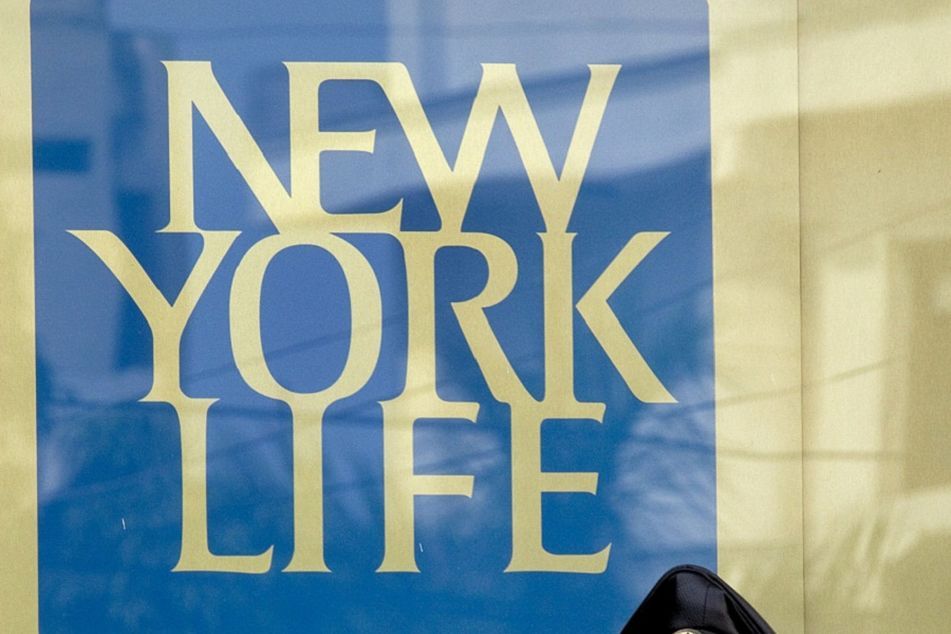New York Life Investment initiative aims to get more women invested
 1
1
CEO Yie-Hsin Hung on efforts to achieve gender parity on both sides of the client relationship.
With women projected to inherit about 70% of the great wealth transfer over the next decade, New York Life Investment Management spent 2019 focused on helping financial advisers improve their outreach and communications with female investors.
The firm’s focus was set after a careful market analysis of what areas advisers needed help, but it’s also an initiative with strong support from the top, namely CEO Yie-Hsin Hung.
[More: Women in leadership: Equality in the workplace starts at the very first promotion
“We saw this as a real opportunity to support our financial adviser clients by engaging directly with women in a very broad-based research study to understand their orientation to investing? — the relationships they have and want to have with advisers,” she said.
The study found that women are 40% less invested than their male counterparts. The program, designed by the firm which is a unit of New York Life Insurance Co., aims to change that. All the while, Ms. Hung works to support diversity inside New York Life Investment Management and help achieve gender parity for the industry.
Liz Skinner: What kind of culture are you trying to develop at New York Life, and how?
Yie-Hsin Hung: There are three key elements to the culture I’m trying to foster: having greater collaboration, innovation and inclusivity. I developed an umbrella framework that’s called One Team, One Purpose, to really foster this sense of collaboration amongst our boutiques, working together to deliver the best of what we have. And part of that culture we want to foster is delivering for our clients and taking initiative and coming together as one.
On the innovation front, I’m very focused on trying to create an environment and set a program to encourage people to engage in new thinking and step outside their day-to-day roles to come up with innovative solutions. This past year, I was an executive sponsor of our companywide hack-a-thon, where the question I posed to the participants was, how can our company provide more meaningful and differential value to financial advisers? I challenged them to create an app that empowers advisers with insights, education and ideas to build better connected experiences with their clients. We’ve selected the winning team and we’re working to bring that to life.
The last piece of culture is really about inclusivity. Our goal is that our organization ultimately reflect the diversity of the clients we serve.
[More: MeToo: Even in the financial advice industry, sexual harassment is a serious problem]
LS: Can you describe the innovative app that’s being developed for advisers?
YH: It’s focused around sustainability. We know this is increasingly on the minds of not only our distribution partners, but clients in general. Having a simple way in which an adviser can really understand the key values their clients have, and then orienting that into their portfolio. We’re really excited about that. We have a boutique in Europe called Candriam that has been a leader in ESG for 30 years now, so we’re leveraging their expertise and putting this through and hopefully it’s very simple for advisers to use.
LS: In terms of hiring, what qualities do you look for in a potential hire?
YH: I look for demonstrated track records of success, as much around what was accomplished as well as how someone went about achieving their goals. What is important to me is a level of strategic thinking and then determination, perseverance and an ability to overcome obstacles.
LS: Are there some things you won’t tolerate in an employee?
YH: Yes. As I alluded to, New York Life Investment is very much focused around relationships and so integrity is critical to that; you know, sincerity and authenticity and following through on commitments to support both our clients and each other. The lack of integrity is something I absolutely won’t tolerate.
LS: You mentioned the importance of collaboration. Is there a way that you are able to judge whether someone will be collaborative?
YH: It’s not always easy, but I think that if you have someone who is focused on the broader organizational goals, a person who talks about ‘we, not me’ in the way they describe their engagement with others. If they can demonstrate projects where they took a leadership role and it involved team members who may not be directly reporting to them, yet they were still able to get those projects accomplished, I think for me those are ways in which you can get a sense of someone’s willingness or their propensity to be a team player.
LS: What’s the hardest part of your job?
YH: Given the level of change and pace of our industry, I think the hardest thing for me is really trying to see around corners to figure out what important investments we need to be making in our business now to ensure that we continue to be relevant — and that we’re delivering for our clients — well into the future.
[More: New York Life settles 401(k) lawsuit for $3 million]
LS: How do you forecast what is coming?
YH: A lot of it is spending time with industry participants, folks that have a different point of view or other leaders of investment organizations, and spending time with our clients. Then we bring teams of people together that have different perspectives within the business. Forcing ourselves to take time away from the day to day to really think long and hard about what potential scenarios we could see in the industry and the needs of our clients evolving. Then tying that back to the investments, big or small, that we can make today that might position us to be better prepared for whatever may come if we start to see signs of the business moving in that direction.
LS: As a woman in an industry traditionally made up mostly of men, have there been any unique challenges that you’ve faced?
YH: I think expectations for women are complicated. You know, for any professional in this business, you have to be incredibly competent and deliver on the bottom line. But I think sometimes the difference comes from how you go about achieving a goal, rather than just the end result. I developed an ability to be incredibly adaptable and flexible and being able to read the situation to know how much I need to adjust to accomplish a goal. Today I’d say it’s a real priority for me to take some of these lessons that I’ve learned over time and support as many women as I can. I’ve been fortunate to have a number of mentors in my life, people who have helped push me outside of my comfort zone and given me really valuable feedback.
Internally, we’ve had a large women’s networking group called the Women’s Initiative here at New York Life, but I just launched an investment employee resource subgroup to help the women in our organization with an investment orientation to develop the networking and professional development that I think is really necessary, so that they have an opportunity to learn from each other.
LS: What kind of an impact do you think the #MeToo movement has had on the financial services, and perhaps all the commentary on Ken Fisher’s remarks?
YH: This moment in time has really put a spotlight on and a greater focus and energy around turning the tides, if you will. Our part in this has been focusing around women investors and how they can be better served by our industry. Ultimately, these conversations and a greater awareness and willingness to really call out those types of behaviors we don’t want to encourage. I think that’s a good thing and it allows all of us to focus on making sure we get to the levels of gender parity that I think as an industry we want to get to.
[Recommended video: Who are the 2019 InvestmentNews Women to Watch?]
LS: What advice would you give to young people who are getting into financial services today?
YH: There’s such a great opportunity to make a meaningful difference in the lives of so many people. We’re able to really help, not only today’s generation, but future generations, achieve their long-term goals. Whether it’s buying their first homes, starting a family, sending their kids to college, thinking about retirement, caring for a loved one, or building a legacy. Whatever their ultimate financial aspirations are, I feel like that’s the opportunity that exists today and to me, it’s a great career. Definitely worth investing in.
LS: Finally, what are the biggest challenges facing financial advisers today?
YH: We see them being pulled in so many directions at the same time as the overall landscape is shifting. I think advisers are expected to play so many roles for their clients as investment guide, a trusted adviser, even in some cases the life coach, and that can be very challenging to accomplish all of those to the level that I’m sure so many advisers would like to. So we try, as part of our commitment to clients, to constantly look for ways we can help advisers deliver greater value to their clients. Our women investing program is one way we’ve done that. We’ve also done a lot of work around how to build high-performance teams, and have a current focus around sustainability. These are areas that I think advisers know their clients care about, yet they may not have the time or the wherewithall to really do the deep work to come up with those insights.
Our final Women Adviser Summit of 2019 will be held in New York City. Register now.
Learn more about reprints and licensing for this article.








